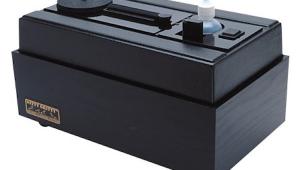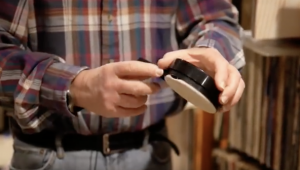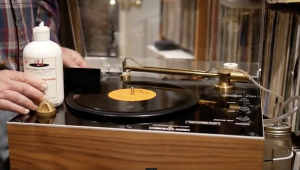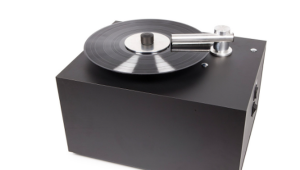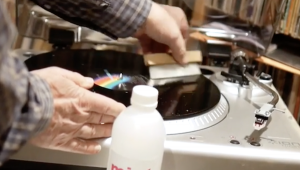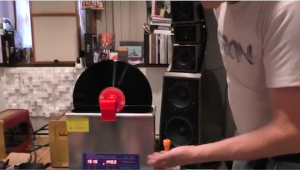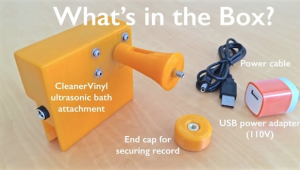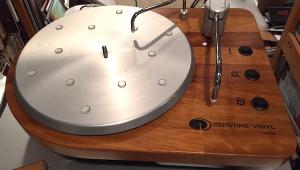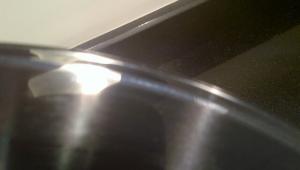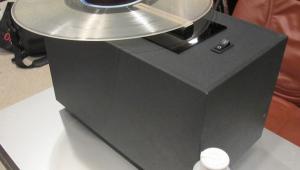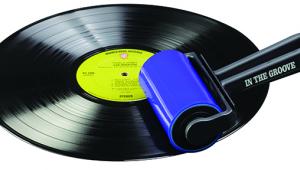The Recently Introduced Record Doctor VI Vacuum Record Cleaning Machine
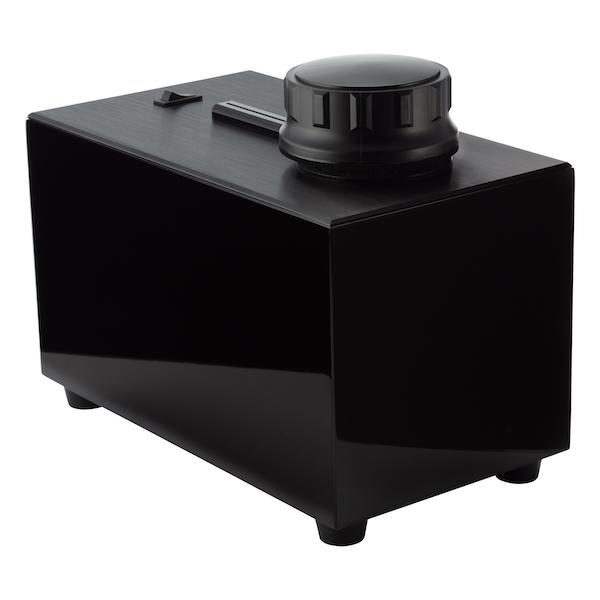
The new machine is similar to the original, though there have been some notable improvements, the first of which is a fluid-resistant anodized aluminum top plate that also increases cabinet rigidity. Additional venting is said to reduce both heat build up and noise (this change has also been made to the still available V), though the new VI is still loud. I measured around 95dB at a distance close to where you'd be standing to clean a record, so be sure to wear earplugs or headphones when using the machine (or any vacuum based machine).
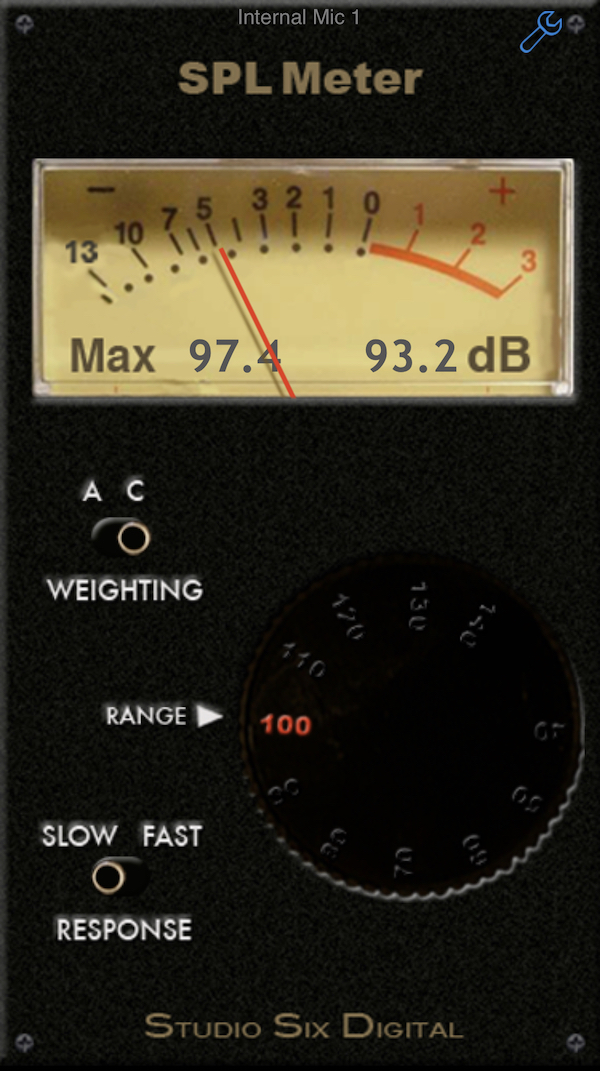
The cabinet is now available in either high-gloss black or the now seemingly obligatory "carbon fiber" look, either of which produces an attractive small box suitable for display. The other changes are a more easily gripped and larger injection-molded record turner, a new Pangea-sourced applicator brush and a cover, which I don't think the original V included. Otherwise the new machine's operating system is identical to the original, which is modeled on the Nitty-Gritty format that uses stationary, replaceable "velvet" lips. The supplied fluid is identified as being non-alcohol based, but of course use your choice of fluids.
As with the V, the new one includes a small diameter roller bearing assembly that fits over the spindle to make record rotation smooth and easy. Some readers under the V review criticized it for being too small and recommended adding a larger one offered by KAB. Please see the original review by clicking on the hyperlink at the top. I applied fluid to the stationary record and rotated the brush, finding that easier than the recommended opposite method. Whatever works. I didn't have a problem with the supplied roller bearing.
The new hand-gripped rotator device that tops the spindle makes record rotation far easier than on the original machine, plus it completely covers the label. While it will take a few records to get the hang of it and figure out when a record is dry and ready to be flipped, it's a quick learn. Considering how easy it is to manually turn a record and how much money you save, for most people, especially those on a budget, not having a motorized record spinner is a more than worthwhile tradeoff—unless you own a used record store and plan on cleaning records all day (and night).
I cleaned a few not previously cleaned records including an old Westminster stereo Brandenburg Concertos Numbers 3&4 (WST 14115) with Hermann Scherchen conducting members of the Vienna State Opera Orchestra. The liner notes describe him as "an outspoken anti-fascist". We could use a few more of those today! I wasn't about to play it dirty to compare to clean, but after cleaning both sides, the record played with not a single pop or click nor was any residue left on the Ortofon Anna D stylus, nor was any residue visible on the record surface. Collected fluid drains by removing a plug from the machine's bottom.
I'm not suggesting vacuum record cleaning approaches a proper ultrasonic cleaning but at $299.95 stepping up to this from no machine or from a basic Spin-Clean type wet machine is pretty much a no-brainer and for ease of use combined with low price this kind of machine cannot be beat. I think owning at least a machine like this is mandatory for anyone serious about vinyl.
